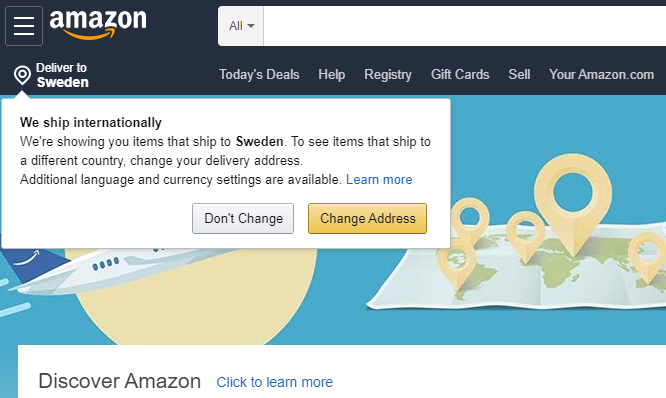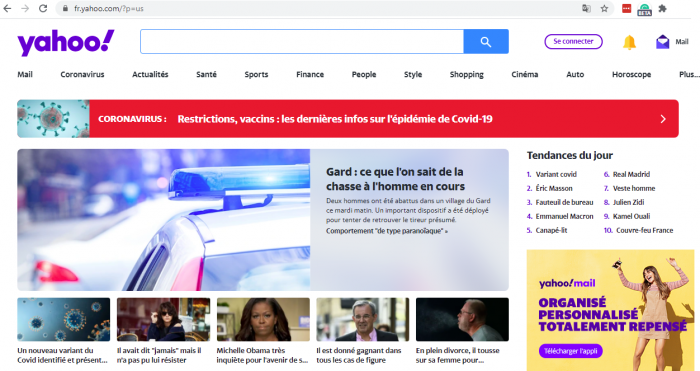The world has become an enormous marketplace thanks to the Internet. Countless people and organizations offer the same products and services—how do you stand out? How do companies like Amazon, Bloomingdale’s, and Lululemon catch customers’ attention (and loyalty)?
The answer: High-quality customer experience (CX).
I’m not exaggerating. Considerable research shows that customers tend to shy away from a company they feel is not treating them right. For instance, PwC found that one in three customers will stop dealing with a brand they love after a single bad experience. The same study revealed that customers are willing to pay more for products and services as long as they have an outstanding CX.
While there are several ways to improve CX, one readily available information that can help is IP geolocation data.
What Is IP Geolocation?
IP geolocation refers to a person’s geographic location based on the IP address of his or her device. Since all Internet-connected devices have IP addresses, the data can provide insights to businesses about their target and existing customers.
IP geolocation includes the following data points:
- Country
- Region
- City
- Latitude and longitude
- Time zone
- GeoName ID
- Autonomous System (AS) number, name, and route
- Internet service provider (ISP)
- Connection type
4 Best Practices for Better CX
IP geolocation data primarily answers the question, “Where are my customers located?” The answer can be found by looking at the IP addresses recorded in your website visitor logs and performing a bulk IP lookup to obtain geolocation data.
Knowing their customers’ locations allows companies to provide better CX, as IP geolocation helps them do the best practices enumerated below.
Give Customers Personalized Content
When customers go to the Amazon website, it automatically shows items that ship to their specific countries. Such an initiative takes the hassle out of adding an item to their shopping carts and discovering upon checkout that this can’t be shipped to their countries.

News website Yahoo! also redirects users to their countries’ specific subdomains (e.g., fr[.]yahoo[.]com for those whose geolocation is France) to show more relevant and location-specific news and current events. The website content also appears in the users’ languages.

Showing location-based content helps companies connect with users in a more personalized way. It makes customers or readers feel like the company knows what they want to see, thereby improving their experience.
Keep Customers Away from Fraud
Fraud could be a deal-breaker in CX. Customers are more likely to end their relationship with a brand after experiencing a loss due to fraud. In banks, for example, customers are more likely to switch banks after an unauthorized transaction. The larger the amount, the higher the churn rate.
Therefore, a significant part of providing better CX is fraud detection and prevention. How can businesses use IP geolocation data in this endeavor? Here are some ways:
Detect and flag traffic from countries where most fraudsters are located.
Recognize users that use virtual private networks (VPNs) and proxy servers. Visitors who use anonymizers may be asked for additional information or authentication.
Compare users’ current geolocation data with their logged ones. Verification should be required if the two don’t match.
Show Local Prices Automatically
When a product in a grocery store doesn’t have a price tag, most customers would put it back on the shelf most of the time. That’s also the reality online.
When an e-commerce site shows prices using its headquarters’s currency instead of the website visitors’, the users would have to search for the current exchange rate and calculate the actual price. Most people don’t want to go through that kind of experience and likely go to another website.
Not knowing the actual costs of items upfront is among the top reasons behind shopping cart abandonment. Here too, using IP geolocation data to see the user’s country and currency can help provide better CX. Bloomingdale’s, for instance, exemplifies this by assuring visitors that all prices are in their local currencies.

Make a Good First Impression
A company’s website is one of the first things that customers see. If they aren’t impressed, they can quickly close the window and go to other websites on the search results page.
As such, site usability is critical to make visitors stay long enough to make a purchase. Site usability refers to how easy people can navigate a website and how useful it is to them. Showing location-based items and content can help improve site usability and, therefore, CX.
Fast loading time is also a significant part of site usability. Simply put, the quicker a page loads, the happier customers will be. While several factors affect site speed, among them is the user’s Internet connection.
IP geolocation reveals this data, so you can optimize your site based on the type of Internet connection visitors use. A user on a mobile Internet connection may not have the same speed as a user on broadband.
—
Providing better CX is a holistic approach, and even seemingly insignificant things matter. The best way to achieve this is to put yourself in the customers’ shoes. And most of the time, IP geolocation data, gleaned through a database or a bulk IP lookup, can help provide clear answers.
What do customers want to see on your website? If you’re an online clothing shop, show the clothes that fit users’ current weather or season.
What do they expect when they click a particular button? If it’s the checkout button, autofill the delivery address with the user’s IP geolocation data.
The bottom line is to make it easier for customers to make a decision or perform a specific task.



